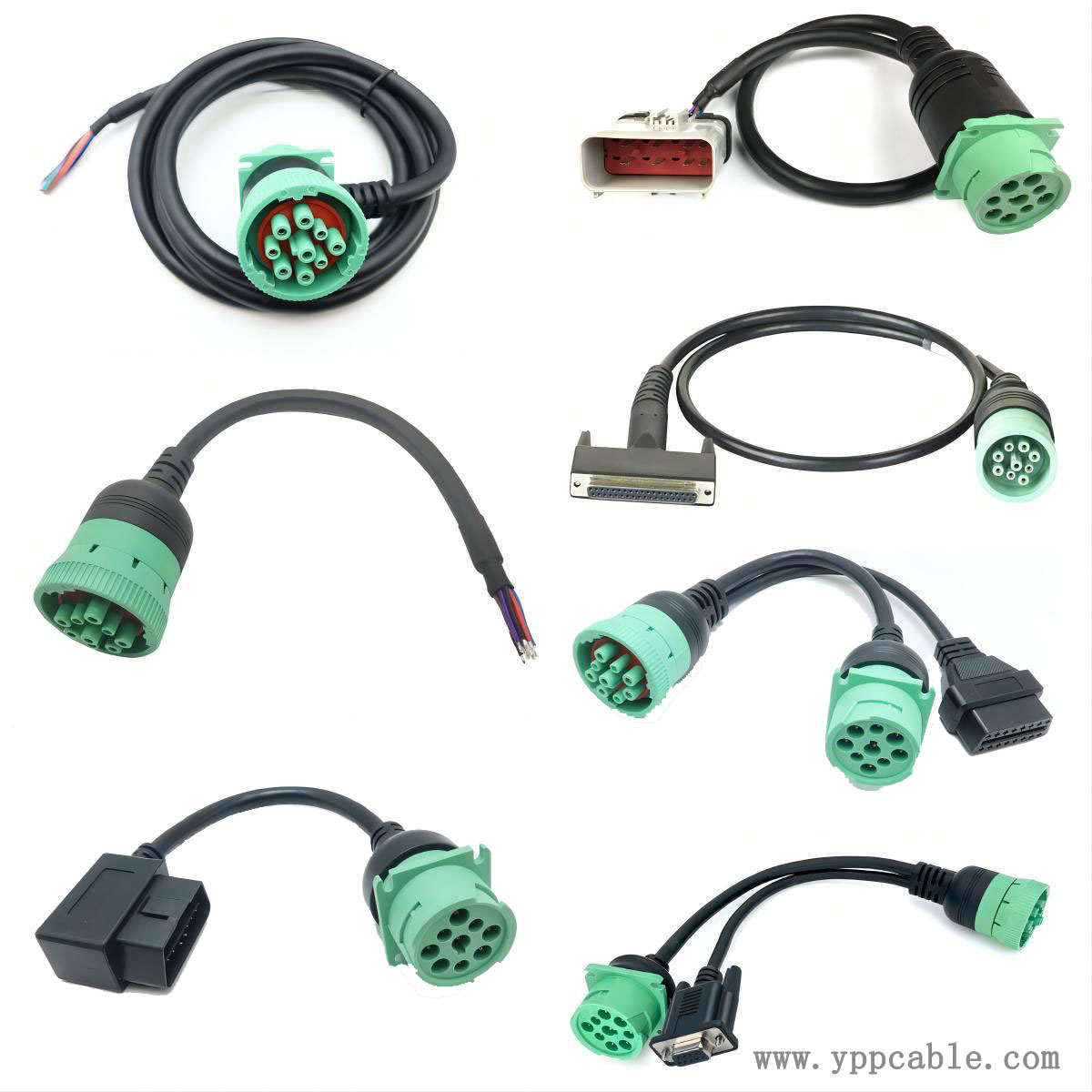What are the protective functions of RP1226 to J1939 cable?
The protection function of RP1226 to J1939 cable mainly revolves around its design characteristics, which enable it to adapt to complex and harsh industrial and vehicle environments. The specific protection functions are as follows:

1. Electromagnetic interference (EMI) protection
Shielding layer design: A shielding layer (such as aluminum foil or braided copper mesh) is used inside the cable to effectively block external electromagnetic interference and ensure the stability of data transmission. This is particularly important in environments with dense vehicle electronic systems, as it can prevent data errors or communication interruptions caused by electromagnetic interference.
Twisted pair structure: Some models adopt twisted pair design to further reduce the impact of electromagnetic noise on signals and improve anti-interference ability.
2. Mechanical protection
Bending resistance and wear resistance: The outer layer of the cable is made of high-strength wear-resistant materials (such as polyvinyl chloride or polyurethane), combined with an internal bending resistance layer design, to enhance the flexibility and anti bending ability of the cable. This enables it to adapt to frequent vibrations and bending during vehicle operation, extending its service life.
Protective conduit: Some models are equipped with protective conduit, providing additional mechanical protection to prevent cable damage due to friction, compression, or rodent bites.
3. Environmental adaptability protection
Wide temperature resistance range: The cable design meets the requirements of extreme temperature environments, typically withstanding a temperature range of -40 ℃ to 125 ℃, ensuring normal operation even under cold or high temperature conditions.
Waterproof and dustproof: Complies with IP rating standards (such as IP67), has dustproof and short-term water immersion protection capabilities, and is suitable for humid or dusty industrial environments.
Corrosion resistance: The outer material has chemical corrosion resistance, which can resist the erosion of corrosive substances such as oil and salt spray, and is suitable for harsh environments such as the bottom of vehicles or engine compartments.
4. Electrical safety protection
Insulation performance: High insulation materials are used between the cable conductor and the shielding layer to prevent short circuits or leakage risks and ensure safe operation.
Overvoltage protection: Some models have built-in overvoltage protection mechanisms to prevent damage to equipment caused by voltage fluctuations.
5. Data transmission stability protection
Low contact resistance: The connector part adopts gold or silver plating technology to ensure low contact resistance, reduce signal attenuation, and improve the reliability of data transmission.
Application scenario examples
Vehicle diagnosis and maintenance: In the maintenance of heavy trucks or engineering machinery, the RP1226 to J1939 cable needs to be connected to the diagnostic equipment and vehicle ECU. Its protective function can ensure stable data transmission in high temperature, vibration or oil pollution environments in the engine compartment.
Industrial automation: In factory environments, cables need to adapt to frequent movements of robotic arms or humid environments, and their anti bending and waterproof properties can ensure long-term reliable operation.
Contact: Kevin Yu
Phone:
E-mail: yppcable@126.com
Whatsapp:
Add: FL2,Bld 6, Hongte Industrial Park, Yongtou , Changan, Dongguan, Guangdong